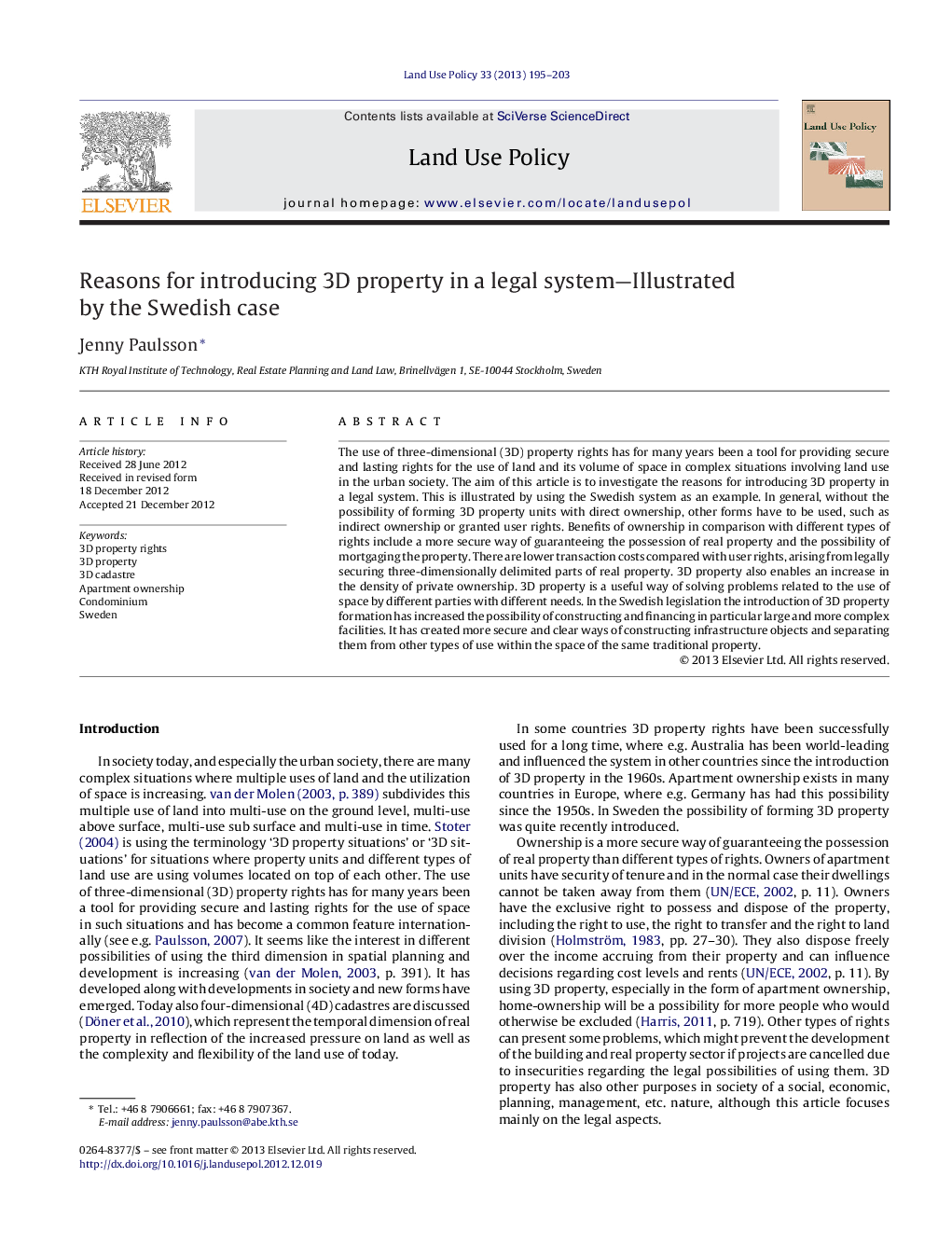| کد مقاله | کد نشریه | سال انتشار | مقاله انگلیسی | نسخه تمام متن |
|---|---|---|---|---|
| 93144 | 160114 | 2013 | 9 صفحه PDF | دانلود رایگان |
The use of three-dimensional (3D) property rights has for many years been a tool for providing secure and lasting rights for the use of land and its volume of space in complex situations involving land use in the urban society. The aim of this article is to investigate the reasons for introducing 3D property in a legal system. This is illustrated by using the Swedish system as an example. In general, without the possibility of forming 3D property units with direct ownership, other forms have to be used, such as indirect ownership or granted user rights. Benefits of ownership in comparison with different types of rights include a more secure way of guaranteeing the possession of real property and the possibility of mortgaging the property. There are lower transaction costs compared with user rights, arising from legally securing three-dimensionally delimited parts of real property. 3D property also enables an increase in the density of private ownership. 3D property is a useful way of solving problems related to the use of space by different parties with different needs. In the Swedish legislation the introduction of 3D property formation has increased the possibility of constructing and financing in particular large and more complex facilities. It has created more secure and clear ways of constructing infrastructure objects and separating them from other types of use within the space of the same traditional property.
► Investigates reasons for introducing 3D property in a legal system.
► 3D property can solve problems concerning use of space by different parties with different needs.
► 3D property is a secure way of guaranteeing possession and possibility of mortgaging.
► 3D property in Sweden facilitated constructing and financing of large, complex facilities.
Journal: Land Use Policy - Volume 33, July 2013, Pages 195–203
